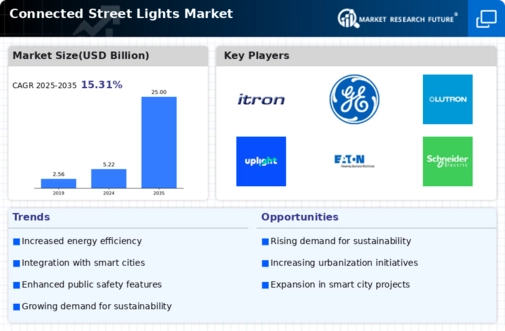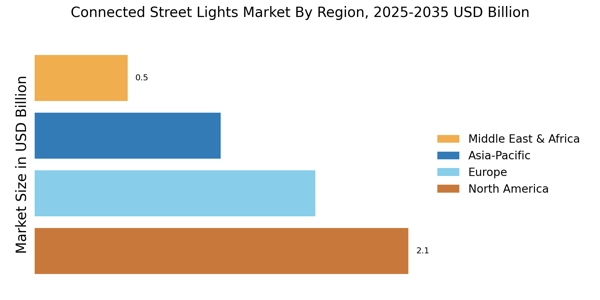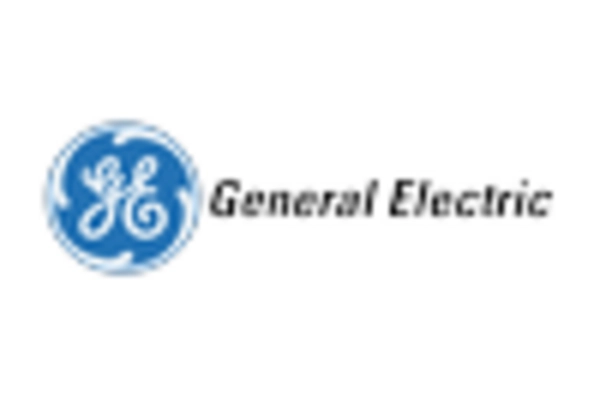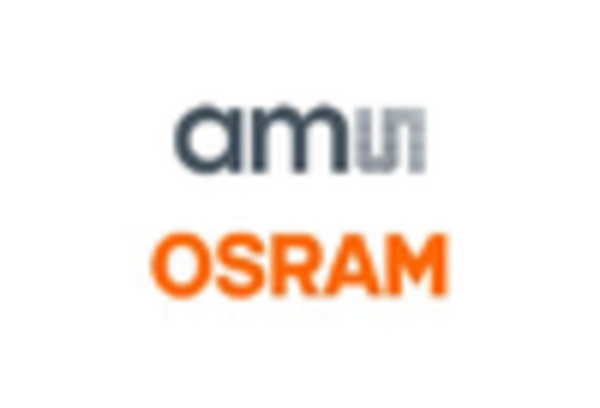Enhanced Public Safety Features
Public safety remains a critical concern for urban planners, and the Connected Street Lights Market addresses this need through advanced safety features. Smart street lights can be equipped with surveillance cameras, emergency call buttons, and environmental sensors, creating safer urban environments. The integration of these technologies not only deters crime but also enhances emergency response capabilities. As cities grapple with safety challenges, the demand for connected street lighting solutions that incorporate these features is expected to rise. This trend indicates a potential shift in urban infrastructure investment, with municipalities prioritizing smart lighting systems that contribute to overall public safety.
Integration with IoT Technologies
The Connected Street Lights Market is experiencing a surge in the integration of Internet of Things (IoT) technologies. This integration allows for real-time monitoring and management of street lighting systems, enhancing operational efficiency. By utilizing sensors and connectivity, municipalities can optimize energy consumption and reduce maintenance costs. Reports indicate that the adoption of IoT in street lighting can lead to energy savings of up to 50%. Furthermore, the ability to gather data on traffic patterns and environmental conditions can inform urban planning and improve public services. As cities increasingly embrace smart technologies, the Connected Street Lights Market is poised for substantial growth.
Government Initiatives and Funding
Government initiatives play a pivotal role in the expansion of the Connected Street Lights Market. Various governments are allocating funds to upgrade aging infrastructure and implement smart lighting solutions. For instance, initiatives aimed at reducing carbon footprints and enhancing energy efficiency are driving investments in connected street lighting systems. In many regions, public-private partnerships are emerging to facilitate these upgrades, with funding often sourced from environmental grants and sustainability programs. The financial backing from governmental bodies not only accelerates the deployment of smart street lights but also fosters innovation within the industry, potentially leading to a market growth rate of over 20% in the coming years.
Rising Demand for Energy Efficiency
The demand for energy-efficient solutions is a primary driver in the Connected Street Lights Market. As energy costs continue to rise, municipalities are seeking ways to reduce expenditures while maintaining public safety. Connected street lights, equipped with LED technology and smart controls, offer a viable solution. These systems can adjust brightness based on real-time conditions, leading to significant reductions in energy consumption. Studies suggest that cities implementing smart lighting can achieve energy savings of approximately 30 to 50%. This growing emphasis on sustainability and cost-effectiveness is likely to propel the market forward, as more cities recognize the long-term benefits of investing in connected street lighting.
Growing Urbanization and Infrastructure Development
The rapid pace of urbanization is a significant driver of the Connected Street Lights Market. As populations in urban areas continue to swell, the demand for efficient and reliable infrastructure becomes increasingly pressing. Connected street lights offer a solution to the challenges posed by urban growth, providing enhanced lighting and energy management capabilities. The United Nations projects that by 2050, nearly 68% of the world population will reside in urban areas, necessitating substantial investments in smart infrastructure. This trend is likely to stimulate the Connected Street Lights Market, as cities seek to modernize their lighting systems to accommodate growing populations and improve quality of life.

















Leave a Comment